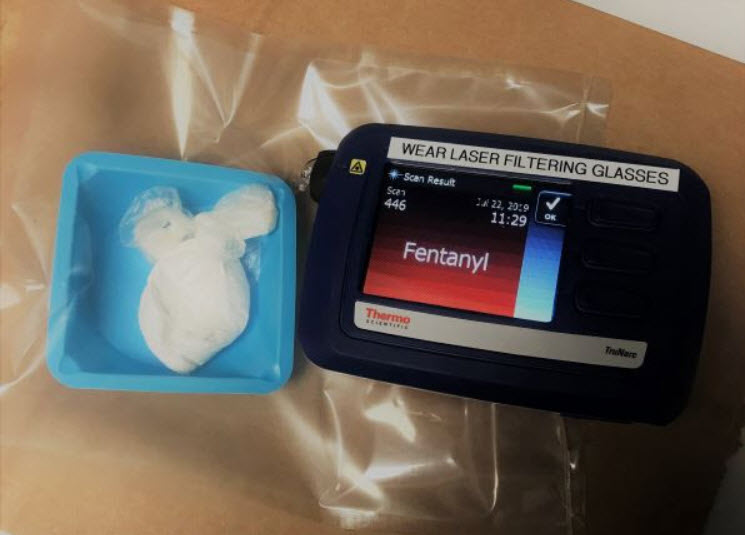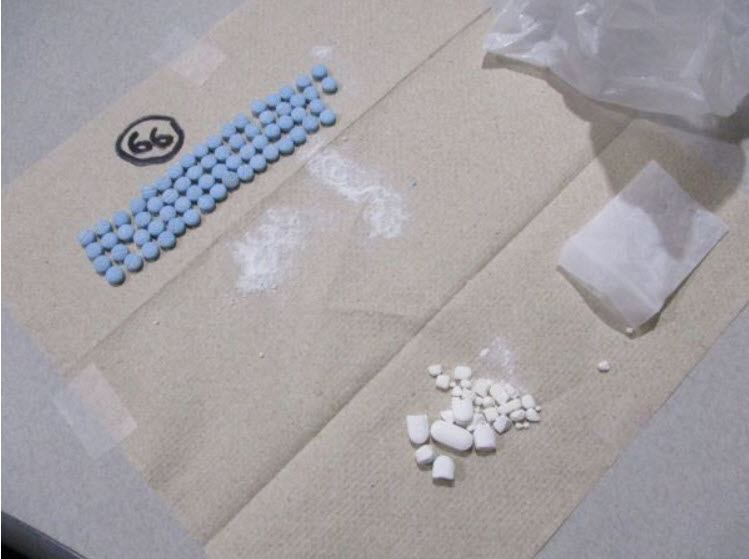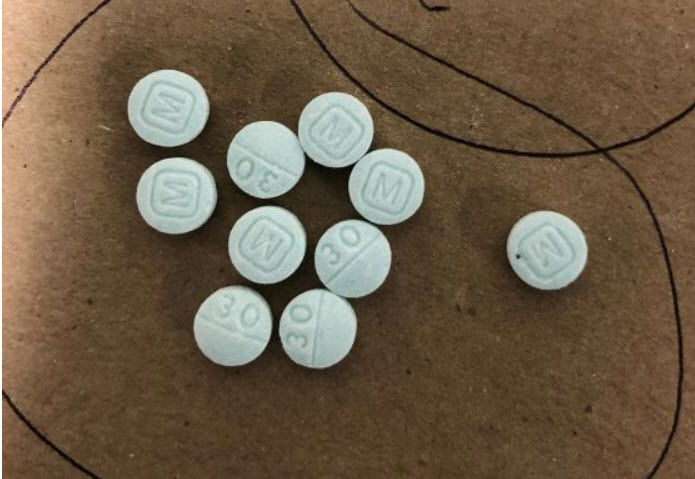The misuse and abuse of illegal drugs is epidemic throughout our nation, including San Diego County. The Sheriff’s Department is committed to an ongoing battle aimed at preventing illegal drugs from entering our jails. Our strategy combines investments in equipment and technology with specialized investigative methods to promote a safer environment for individuals in custody.
The use of illegal drugs poses a real risk of harmful exposure and/or overdose. Fentanyl for example, is a deadly and increasingly prevalent drug that is impacting our communities and our jails. In the latest report card, the Prescription Drug Abuse Task Force (PDATF) recorded 275 overdose deaths in 2019, with 151 of those caused by fentanyl. A speck the size of a few grains of salt or even one touch of this drug can kill you. It can be absorbed through the skin or inhaled if it becomes airborne.

Deputies and medical staff have access to Naloxone nasal spray for overdose incidents. Naloxone is an opioid antagonist (reversing agent) that neutralizes the effects of an opioid (e.g. heroin, fentanyl, oxycodone, etc.) in the body. Deputies have at times had to administer multiple sprays before a person regains consciousness. Deputies and medical staff have been rushed to the hospital after being exposed to fentanyl.
Sheriff’s Detectives conduct investigations aimed at gathering evidence/information from drug overdose victims to track down dealers and suppliers. This is part of a protocol implemented in 2017 to hold individuals accountable for manufacturing and selling dangerous drugs in our communities and jails.
The Sheriff’s Department received the 2020 Innovation Award from the American Jail Association (AJA) for its counter drug smuggling approach. The American Jail Association is a national, nonprofit organization that supports the professionals who operate our nation’s jails. It is the only national association that focuses exclusively on issues specific to the operations of correctional facilities. The department’s counter drug smuggling efforts by the Detentions Investigations Unit (DIU) and the Mail Processing Center (MPC) program were recognized as solutions that would benefit other agencies and hold a reasonable prospect of implementation by other organizations.
The following are examples of the methods used to intercept drugs and provide education and awareness to individuals in our custody:
Point of Entry:
Body scanners at all intake facilities and George Bailey Detention Facility
Drug awareness videos played in the facilities
“No Questions Asked” drug drop boxes
Posted warnings on the dangers of smuggling drugs in the body
Inmate screening and flagging of potential smugglers
Interception and Prevention:
Deputies and medical staff have access to Naloxone for overdose victims
Mail Processing Center has special equipment for drug detection and deputies trained in drug smuggling methods
TruNarc – mobile testing devices that identify various drug types
Drug detection K-9s
Drug awareness training for deputies and staff
Anonymous Tip Line
Using Information Led-Policing (ILP) to identify patterns, links and trends of drug activity
Substance abuse programs in jails in collaboration with community partners to promote sobriety upon release
Our expansive drug detection approach has resulted in the seizure of more than 1,509 grams of heroin, methamphetamine, cocaine, fentanyl powder and pills from January through March of 2021. By comparison, during the same period in 2020, the total seizures amounted to more than 602 grams of similar illegal drugs.

Since the formation of our Mail Processing Center, our deputies have intercepted hundreds of drug-laced letters/cards and hidden narcotics-laced strips. This smuggling method is very dangerous because the mailed items contain dangerous narcotics (i.e. methamphetamine, heroin, morphine, fentanyl), which all pose a hazard to everyone handling them. Since the start of the mail interception program, mail seizures have resulted in arrests of individuals attempting to send drugs into our jails, and additional charges have been filed against individuals already in custody.

The Sheriff’s Department is committed to keeping illegal drugs from entering our jails. We encourage citizens to report any information that impacts the safety and well-being of our inmates and staff. To submit an anonymous jail tip regarding drugs, crimes, or weapons, click here.



















